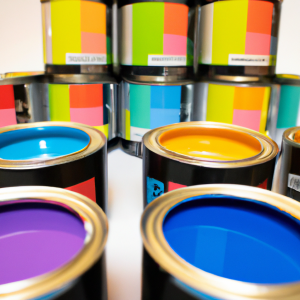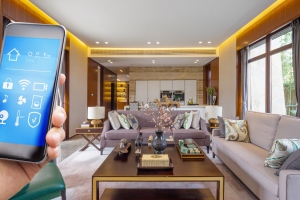Lighting is more than just a functional necessity. It’s a powerful tool that can transform your home, influence your mood, and even impact your energy bills. If you’re still using traditional incandescent bulbs, it’s time to illuminate your world in a whole new way.
Welcome to the era of LED and smart bulbs – a revolution in home lighting that promises superior energy efficiency, exceptional longevity, and unprecedented control over your home’s ambiance.
Let’s delve into the world of these innovative lighting solutions and discover how they can redefine your living space while contributing to a greener planet.
These bulbs offer numerous benefits in terms of energy efficiency, longevity, and control over your home lighting.
LED bulbs are a game changer when it comes to energy efficiency. They use up to 75% less energy than traditional incandescent bulbs, which means a significant reduction in your energy bills. Additionally, LED bulbs last up to 25 times longer than incandescent bulbs, which means fewer replacements and less waste.
But energy efficiency is not the only benefit of LED and Smart Bulbs. Smart bulbs take it a step further by offering remote control and customizable options for your home lighting. With these bulbs, you can easily control your lights from your smartphone or voice assistant and adjust the brightness, color, and timing to fit your needs.
Key Takeaways
- LED bulbs use up to 75% less energy than incandescent bulbs and last up to 25 times longer, resulting in significant energy savings and reduced waste.
- Smart bulbs offer remote control and customizable options for home lighting, allowing for convenient and personalized lighting options.
- Both LED and smart bulbs contribute to sustainability practices and can help reduce carbon footprint.
- LED bulbs do not emit UV rays or excessive heat, making them safer and more energy-efficient than traditional bulbs.
Increased Energy Efficiency with LED Bulbs
You’ll save money on your energy bills by using LED bulbs because they use less electricity than traditional bulbs! In fact, LED bulbs use up to 85% less energy and last up to 25 times longer than incandescent bulbs.
This means that not only will you save money in the long run, but you’ll also be doing your part for the environment by reducing your carbon footprint.
One concern people have when switching to LED bulbs is the cost. While LED bulbs may be more expensive upfront, they’re actually more cost-effective over time due to their energy efficiency and longevity. In fact, a single LED bulb can last up to 25,000 hours, compared to an incandescent bulb which lasts only about 1,000 hours.
This means you’ll need to replace traditional bulbs much more frequently, adding up to higher costs over time.
Another advantage of LED bulbs is the variety of color options available. LED bulbs come in a range of colors, from warm white to cool daylight, allowing you to customize the lighting in your home to your preference.
Additionally, LED bulbs don’t emit UV rays or excessive heat, making them a safer and more comfortable option for lighting your home.
So why not make the switch to LED bulbs and start enjoying the benefits of increased energy efficiency and cost savings today?
Longer Lifespan of LED Bulbs
Imagine walking into your home and never having to worry about changing a light bulb again because your LED bulbs have a lifespan of up to 25,000 hours. That’s almost 3 years of continuous use!
LED bulbs have a much longer lifespan compared to traditional incandescent and fluorescent bulbs, which typically last only about 1,000 and 8,000 hours, respectively.
Not only does the longer lifespan of LED bulbs save you the hassle of frequent replacements, but it also saves you money in the long run. Although LED bulbs have a higher upfront cost compared to traditional bulbs, their energy efficiency and longer lifespan more than make up for the initial investment.
In fact, according to the US Department of Energy, LED bulbs use at least 75% less energy than incandescent bulbs and can save up to $80 per year on electricity costs.
Another advantage of LED bulbs is that they come in a variety of brightness levels. Unlike traditional bulbs, which emit a warm yellow light, LED bulbs can be designed to emit a range of colors, from warm white to cool white.
This means you can choose the brightness level that suits your needs, whether it’s for reading, cooking, or simply relaxing. LED bulbs are also dimmable, which means you can adjust their brightness level to create the perfect ambiance for any occasion.
Remote Control of Lighting with Smart Bulbs
Transform your home into a symphony of light with smart bulbs that give you complete orchestration over your lighting. Smart bulbs allow you to control your home’s lighting with ease, using your smartphone or voice activation.
These bulbs connect to Wi-Fi, which enables you to control your lighting from anywhere in your home or even when you’re away. With smart bulbs, you can schedule your lights to turn on and off at specific times, creating a more energy-efficient home.
For example, you can set your lights to turn off when you leave for work and turn on when you arrive home. You can also set your lights to gradually turn on in the morning, simulating a sunrise, which can help you wake up feeling refreshed. These scheduling capabilities not only save you money on your energy bill but also create a more comfortable and convenient home.
Voice activation is another feature that makes smart bulbs a game-changer in home lighting. With voice commands, you can turn your lights on and off, change the brightness, or even change the color of the light.
This feature is not only convenient but also can be used to create a more personalized and unique lighting experience in your home. With smart bulbs, the possibilities are endless, and you have complete control over your home’s lighting.
Customizable Lighting Options with Smart Bulbs
Enhance your home’s ambiance with customizable lighting options available through the use of intelligent bulbs. With smart bulbs, you can adjust the brightness, color temperature, and even the color of your lighting to match your mood or the occasion.
Whether you want a warm yellow glow for a cozy night in or a bright white light for reading or working, smart bulbs can provide you with the perfect lighting to suit your needs. One of the most exciting features of smart bulbs is the ability to choose from a wide range of color options. You can choose from millions of colors and create a unique look for your home.
Set a cool blue tone for a relaxing evening or a warm red for a romantic dinner. The possibilities are endless. With the ability to change the color of your lighting, you can create a different atmosphere for each room in your home and enhance the overall look and feel of your space.
Another great feature of smart bulbs is their voice activation capability. With voice control, you can easily adjust your lighting without having to get up from your seat. Simply use your voice to turn on or off your lights, adjust the brightness, or change the color. This feature is not only convenient but also adds a touch of luxury to your home.
With customizable lighting options and voice control, smart bulbs are the perfect addition to any modern home.
Environmental Benefits of LED and Smart Bulbs
You may be surprised to learn that switching to LED and smart bulbs can have a significant impact on the environment. These types of lighting are highly energy-efficient, using up to 80% less energy than traditional incandescent bulbs. This means that not only will you save money on your energy bills, but you’ll also be reducing your carbon footprint.
LED and smart bulbs also have a much longer lifespan than traditional bulbs, which means they need to be replaced less frequently. This not only reduces waste but also means less energy is required to manufacture and transport the bulbs. Additionally, LED bulbs don’t contain the harmful chemicals found in traditional bulbs, such as mercury, which can be harmful to the environment.
By choosing to switch to LED and smart bulbs, you’re not only making a sustainable choice but also contributing to a larger movement towards sustainability practices. As more people make the switch, there’ll be a decrease in demand for traditional bulbs, leading to a decrease in manufacturing and transportation emissions.
By taking small steps towards reducing your carbon footprint, you’re making a positive impact on the environment and contributing to a more sustainable future.
Frequently Asked Questions About the Benefits of LED and Smart Bulbs
Can LED and smart bulbs be used in any type of lighting fixture or are there specific fixtures they are compatible with?
One of the Benefits of LED and Smart Bulbs is that they are compatible with most lighting fixtures, including ceiling fans, chandeliers, and recessed lighting. However, check the bulb’s size and base type to ensure compatibility. With a wide range of fixture options, you can easily upgrade your home lighting.
Are LED and smart bulbs more expensive to purchase initially compared to traditional incandescent bulbs?
When comparing initial cost, LED and smart bulbs are more expensive than traditional incandescent bulbs. However, their long-term savings potential is significant due to their energy efficiency and longevity. For example, a household can save $75 per year by switching to LED bulbs.
How do LED and smart bulbs affect the overall ambiance and mood of a room compared to traditional bulbs?
LED and smart bulbs can enhance the mood of a room with their color options. They provide energy efficiency, longevity, and control over home lighting, making them a cost-effective and convenient option. Upgrade now to elevate your home’s ambiance.
Can LED and smart bulbs be used with dimmer switches?
LED and smart bulbs are compatible with dimmer switches, but compatibility concerns may arise due to differences in voltage requirements. However, dimming capabilities are a key advantage of smart bulbs, allowing for customizable lighting levels and energy savings.
Are there any potential health concerns associated with using LED and smart bulbs for extended periods of time?
Beware blue light concerns, causing eye strain, when using LED and smart bulbs for extended periods. Data shows blue light disrupts sleep and circadian rhythms. Join the informed audience addressing health risks while managing home lighting.
Bottom Line
In conclusion, you’ve discovered the numerous advantages of LED and smart bulbs. By switching to LED bulbs, you’ll reduce your energy consumption and save money on your electricity bills. Moreover, the longer lifespan of these bulbs will mean less frequent replacements and less waste in landfills.
Smart bulbs offer greater control and customization of your home lighting. You can remotely control your lights from your smartphone, schedule them to turn on and off at specific times, and even adjust the color and brightness to suit your mood. As a result, you’ll have a more comfortable and convenient living space that suits your needs.
In essence, switching to LED and smart bulbs is a smart and practical choice that not only benefits you but also the environment. As the famous saying goes, “Every little bit helps,” and by making small changes like these, we can collectively make a big impact on our planet.


